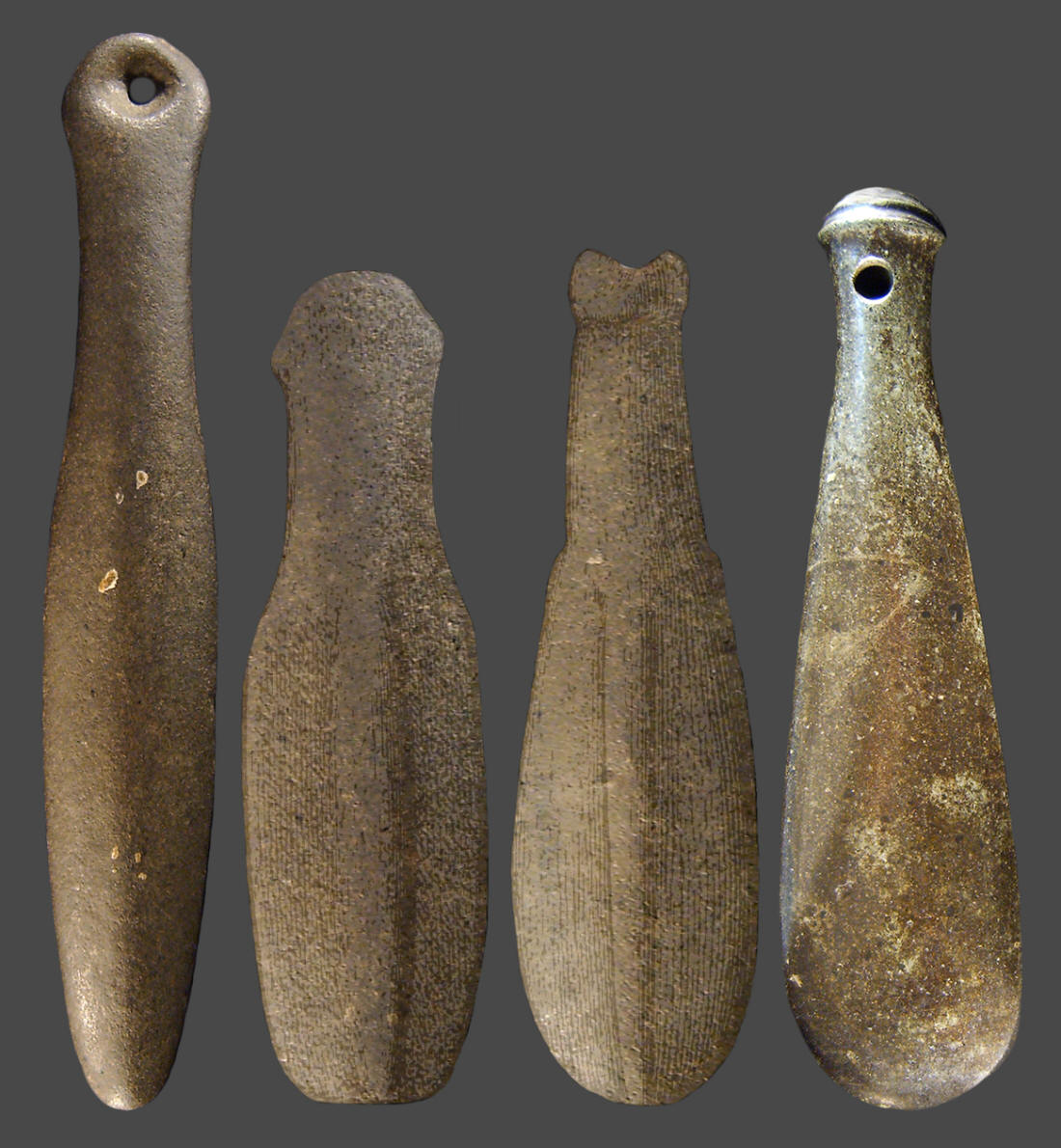|
COMPARISON:
NORTHWEST COAST & NEW ZEALAND CLUBS
NORTHWEST COAST U.S. AND NEW
ZEALAND
RETURN TO PAGE 1
COPYRIGHT
DECEMBER
31, 2013 PETER A. BOSTROM
Writers
often comment about the similarity of the stone clubs used by the Maori
of New Zealand to those found in the northwest coastal area of the U.S. and Canada.
Although most of the northwest coast clubs are not similar in design,
enough examples have been found with perforated handles and wide blades to
offer an argument of similarity. What is most interesting is that both
cultural areas were using stone clubs at the
same time from the 17th century into the 19th centuries. The Maori began
using them very late compared to those used in the northwest coast. Fighting clubs, made only of stone, are so rare in the world
it's hard to believe the two locations were not in contact with each
other. But separate invention of similar tool types and technology is
not unknown. The northwest coast stone clubs are more bulkier than the
Maori clubs which are ground and polished to thin and sharp edged
blades.
These four clubs illustrate some of the similarities writers
refer to when comparing New Zealand stone clubs to northwest coast stone
clubs. The three stone clubs on the left are from sites in south central
Washington and the stone club on the right is a typical example from New
Zealand. The illustrated clubs in the center are from drawings that were
computer altered with a stone textured surface. The club on the left is
perforated on the end of the handle with a conically drilled hole and in
that respect it's similar to the New Zealand club on the right. Another
similarity are the wide blades on the two northwest coast clubs in the
center. They compare in outline fairly well to the New Zealand club.
What sets the two types of clubs apart, is the New Zealand clubs are
much more highly refined with polished surfaces, thin blades, sharp
edges and some were made from jadite. The northwest coast clubs do not
have sharp edges or thin blades and most of them do not have holes on
the ends of the handles. The surface finishes are also not
nearly so well smoothed and polished as New Zealand stone clubs.

|
